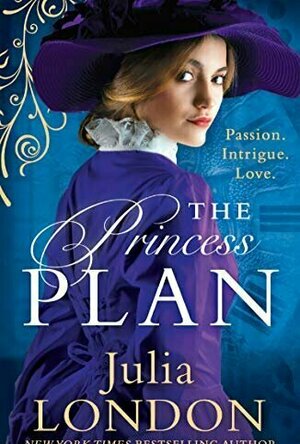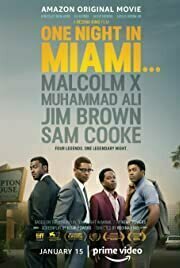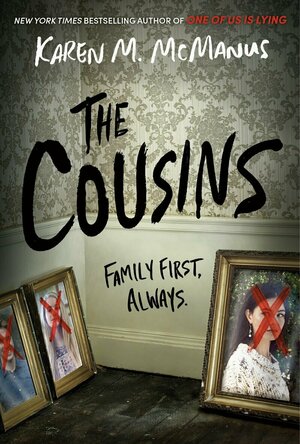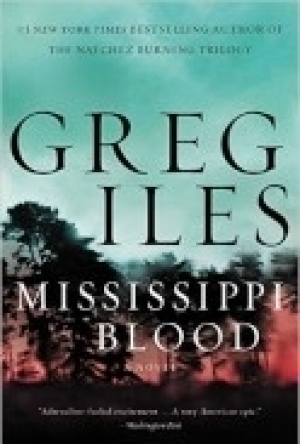
Mississippi Blood
Book
#1 New York Times Bestselling Author The endgame is at hand for Penn Cage, his family, and the...

The Last Night
Video Game Watch
Humans first knew the era of survival. Then they knew the era of work. Now they live in the era of...
adventure

Cougar Family Sim Wild Forest
Games and Entertainment
App
Play as the cougar! Create family! Breed Cubs! Upgrade home! Hunt in different biomes! Dive into...

Highway Prado Racing Game!
Games
App
Drive 4x4 Prado fast from cockpit's view through the endless highway traffic and realistic city....
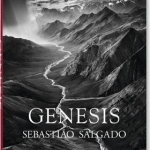
Genesis
Sebastiao Salgado and Lella Salgado
Book
Human (and) nature. Epic journeys to the ends of the earth: Salgado's opus on our planet in its...
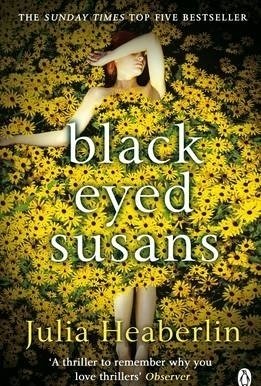
Black-Eyed Susans
Book
**THE TOP 5 SUNDAY TIMES BESTSELLER** 'My book of the year so far. Breathtakingly, heart-stoppingly...
Gareth von Kallenbach (980 KP) rated Black Widow (2021) in Movies
Jun 29, 2021
This is not to say that the film is an origin story as it uses her backstory through a clever introduction that establishes her “family” as sleeper agents in Ohio before they escape and she and her cover sister are tuned over for conditioning and training.
Since Natasha is on the run from the authorities; she finds a remote location in Norway to bide her time. This does not last as a dangerous adversary known as the Taskmaster arrives and sets a chain of events into motion.
Natasha has been sent a package from her cover sister Yelena (Florence Pugh) who also went through the Red Room and became a top assassin in the years since she and Natasha last saw one another.
Despite her mixed feelings; Natasha ventures to Budapest and confronts Yelena who in turn reveals the package she sent her contains a compound that can free the other Black Widows from the control of the Red Room which despite Natasha’s insistence is still very much alive as is the head of the institute which she is convinced she killed long ago.
With Taskmaster and other Widows hot on their trail, Natasha and Yelena are forced to seek the help of their former “Father” the imprisoned hero Red Guardian (David Harbour), and their cover Mother Melina (Rachel Weisz), to find the location of the new Red Room; free the Widows, and end the program once and for all.
What follows is an engaging story with solid action and effects that remains at its core a character story as Natasha attempts to reconcile her cover family with her new Avengers family and the pain of her upbringing and conditioning.
Marvel resisted calls from some to release the film on Disney+ last year when the Pandemic caused multiple delays to the planned release dates. This decision to me was very wise as this is a film that needs to be seen and heard on the big screen as it is an experience that is best experienced in a cinema with others.
While many attempts were made over the decades to adapt comic heroes to film and television; most of them came up lacking and disappointed fans of the source material. Marvel for over a decade has continued to succeed as they have a clear plan, cast well, and have engaging characters that develop over time.
“Black Widow” fills in a missing gap of time in the MCU well and also sets up future adventures as a scene in the credits clearly links two of the live-action Disney+ series and shows that the long-term plan for the MCU continues and incorporates the film and television series well.
From the moment the Marvel intro and music appeared on the screen until the very end; “Black Widow” was a very enjoyable and engaging blockbuster adventure that shows Marvel at the top of their game; and why they continue to set event-level movies not to miss.
Ivana A. | Diary of Difference (1171 KP) rated The Princess Plan (A Royal Wedding, Book 1) in Books
Oct 5, 2020
<a href="https://diaryofdifference.com/">Blog</a>; | <a href="https://www.facebook.com/diaryofdifference/">Facebook</a>; | <a href="https://twitter.com/DiaryDifference">Twitter</a>; | <a href="https://www.instagram.com/diaryofdifference/">Instagram</a>; | <a
<a href="https://ko-fi.com/diaryofdifference">Ko-fi</a>;
#1 <a href="https://www.goodreads.com/review/show/3099410597">The Princess Plan</a> - ★★★
#2 <a href="https://www.goodreads.com/review/show/3361072334">A Royal Kiss and Tell</a> - TBR
<img src="https://i0.wp.com/diaryofdifference.com/wp-content/uploads/2020/09/Book-Review-Banner-85.png?resize=768%2C432&ssl=1"/>;
I received The Princess Plan by Julia London from the amazing team at Mills & Boon. This is the first book in the series A Royal Wedding.
Historical romances are a hit or miss for me, and this one didn’t really hit the mark like I wanted it to. Prince Sebastian of Alucia is on his visit in London, when his personal secretary is murdered.
And a murder such as this one creates a very big buzz in London’s high society. When a scandal like this occurs, it’s all anyone talks about, including Eliza Trickelbank, who happens to own a gossip gazette.
When her gazette receives an anonymous tip off about this crime, Prince Sebastian has no choice, but to work with her in order to solve the mystery of his friend’s murder.
With a trade deal on the line and a pressure to find a noble bride, there is nothing more dangerous than a prince socialising with a commoner. They can’t seem to agree on anything, and find each other frustrating, but the temptation between them becomes harder and harder to be ignored.
<b><i>My Thoughts:</i></b>
I loved the Cinderella vibe around this book, and the trope of prince meets commoner. I also enjoyed the trope of enemies becoming lovers. Even though, in this case, it was more of a forbidden temptation meets annoyance that turns into affection.
I liked Sebastian as much as I disliked Eliza. Everything that annoyed me about her, he somehow managed to compensate for. She was trying very hard to be independent, but instead, she gave up a vibe that was almost unbearable and very insecure. With Sebastian I loved the dilemma between country vs heart, which I assume many nobles, especially during that time in England felt. I am sure that many of them sacrificed their love just to do right by their country.
I found the gazette excerpts quite funny at times, and very enlightening. They take you into a whole new world, where you feel as if you’re there, getting ready for a ball, or reading about the latest gossip of the nobles. The writing style matches the time setting perfectly. I think Julia London did an amazing job when it comes to that. Here is an excerpt that really made me giggle:
<b><i>“New information suggests that if a lady wishes to enjoy a romp without consequence, trotting a horse briskly the day after the romp should remove said consequence.”</i></b>
To conclude, I enjoyed The Princess Plan, but it wasn’t a favorite. The writing was beautiful and I am sure this will be a favorite for people that love historical romances. The only reason I didn’t love it is because of Eliza’s character and the tropes that I have already seen before.
Lenard (726 KP) rated One Night in Miami (2020) in Movies
Jan 9, 2021
Like another recent film, the path is a choice between making changes within the system, like Sam Cooke and Jim Brown have attempted, or to change the system from the outside, like Malcolm and Clay. Both paths have their advantages, and both are also deadly. Within a year, both Malcolm and Cooke would be dead. The movie based on a play finds ways from each character to learn from the others by pairing them off in various combinations (Malcolm-Cooke, Brown-Clay, Cooke-Clay, Malcolm-Brown, Malcolm-Clay, Cooke-Brown). The main antagonism takes place between Cooke and Malcolm. Cooke sees Malcolm as a militant who is creating sowing seeds of fear in the eyes of "America" and Malcolm sees Cooke as a Stepin Fetchit with a huge amount of talent wasted playing by the rules. Cooke shows Malcolm that he is quietly taking control while Malcolm gives Cooke the spark to sing for civil rights for the less fortunate members of black society. Malcolm also begins to see how his actions have hurt his brothers by grouping all members of one race together similar to the way whites do not distinguish between black individuals. The movie never shies away from shading each hero with flaws.
Malcolm may be paranoid as evidenced by a couple scenes where he sees people on his trail who may or may not be real. Under a lot of pressure to break from his organization, Malcolm sees his staff betraying him to the feds who have been investigating him since he first started speaking. The whole subplot humanizes a man who many view as dangerous to the world. Jim Brown is also seen as a hero to most. He broke records and is about to conquer the film industry. Maybe they are using him, but he is using them to shine a light on the inequality of the races.
Lastly, one scene in the movie is a highlight. It is not in Miami, but in Boston. It shows how one man can turn a riot into a celebration of joy. With the main road blocked, a man of great talent can turn adversity into victory using his wits and his voice.
Heather Cranmer (2721 KP) rated The Cousins in Books
Dec 21, 2020
Mildred Story cut ties with all of her children twenty-four years prior. All of her children swear they have no idea what they did to be cut off. However, when Mildred's grandchild receive a letter from Mildred inviting them to stay and work on her island, her grandchildren are a little suspicious but end up going. However, when they decide to try to figure out the mystery, things take a dangerous turn.
The plot really reeled me in. I love a good mystery, so The Cousins was right up my alley. While the story did flow together really well, I felt that the pacing was a bit on the slow side. It wasn't painfully slow, but it made it where The Cousins wasn't one of those books where you can't put it down. I guess I was just hoping for more action. There were a few plot twists which were a bit unpredictable which was enjoyable. The setting and world building were done nicely. It was easy to feel like I was on the island with everything that was going on. I enjoyed the flashbacks from Mildred's children - Adam, Anders, Archer, and Allison. I felt like there were no cliff hangers and that all my questions were answered by the end of the book. I suppose McManus could make a sequel from this book, but I think that this book would be better left as a standalone.
The characters in The Cousins were written decently enough although I never really cared too much for any one character. I just had a hard time relating to any of the characters, so it was hard to really care for them. Milly came across as being too standoffish and stuck up a lot of the time. While I liked that she wasn't afraid to speak her mind, sometimes I felt like she went a bit overboard. Jonah was an alright character, but I felt like he lacked enough depth to really like him. I just felt like there was something missing with his backstory. Aubrey was an okay character too, but I felt like she wasn't much of a main character. I would have liked to see more of Aubrey because I felt like she didn't really add anything to the story and that her character was kind of pointless. Aubrey's character felt more like a filler in the book. I would have also liked to see more scenes with Mildred as she isn't in many. Knowing the whole story, I can see why she wasn't as present, but it would have been nice to at least have her in the book a bit more.
Trigger warnings for The Cousins include swearing, murder, death, minor violence, drinking (including underage), miscarriage, and teenage pregnancy,
Overall, The Cousins does have an interesting plot despite the execution. The world building is done fantastically, and the plot twists are plentiful. I would recommend The Cousins by Karen M. McManus to those aged 15+ that like mysteries.

